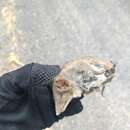ar
الأسماء في صفحات التنقل


Perception Channels: tactile ; chemical
US Migratory Bird Act: no special status
US Federal List: no special status
CITES: no special status
IUCN Red List of Threatened Species: least concern
In their niche on the forest floor, A. swainsonii help control the population of soil invertebrates with their voracious appetites.
A. swainsonii feed mostly on soil invertebrates, as their primary habitat is the forest floor. Along with worms and insects they have been observed eating lizards, small birds, fruit and vegetation (Tasmanian PWS 2001. Mammals of Lammington National Park 2001.) In captivity individuals have been sustained on earthworms, mealworms, grasshoppers, beetle larvae, cockroaches, and small frozen mice. (Williams and Williams 1982)
Animal Foods: birds; mammals; amphibians; insects; terrestrial worms
Plant Foods: leaves; fruit
Primary Diet: carnivore (Insectivore )
Antechinus swainsonii is found in south-eastern Australia, ranging from southern Queensland to eastern South Australia, throughout Victoria and New South Wales, and on the island of Tasmania.
Biogeographic Regions: australian (Native )
A. swainsonii are most commonly found in the moist sclerophyll forests and rainforests of the Australian mainland and Tasmania. A. swainsonii have also been found to inhabit fields overgrown with high grasses but favor any habitat with a dense understory, where most of their activities are restricted (Williams and Williams 1982).
Habitat Regions: tropical
Terrestrial Biomes: forest ; rainforest
Females of the species A. swainsonii usually die after rearing their first litter and males die shortly after copulation (Williams and Williams 1982). Males captured after breeding season still die within the same time period as wild males from their population, but males captured before the breeding season have lived up to two years and eight months (Nowak 2001). Females can live over two years, producing a 2nd litter, but as stated above most die after rearing one litter.
Range lifespan
Status: captivity: 3 (high) years.
Average lifespan
Status: captivity: 3.3 years.
A. swainsonii range in color from dark gray to black. Males and females are sexually dimorphic with an average weight of 65 grams for males, and 41 grams for females (Tasmania PWS 2001; Mammals of Lamington National Park 2001). Males have been reported to reach 130 grams and females 70 grams and it is believed that weight is variable due to availability of resources (Williams and Williams 1982). The average head and body length of A. swainsonii is 128mm and the average tail length is 116mm (Mammals of Lamington National Park 2001).
Other Physical Features: endothermic ; bilateral symmetry
Average mass: 41 g.
Average basal metabolic rate: 0.351 W.
Domestic cats are the only serious threat of predation to A. swainsonii. (Nowak 2001)
Competition for mates is extremely high among males. During mating, males have been observed to grab the scruff of the females neck with their teeth, while the females respond by kicking, rolling, and a display of open-mouthed hissing (Williams and Williams 1982). During the breeding season males do not eat, but their body is sustained through gluconeogenic mobilization of body protein (Nowak 2001). This results in deterioration of the male's immune system and death usually within three weeks of copulation. These victims of male "die-off" have been found to have balding patches located on their fur (Tasmanian PWS 2001).
Females breed once, sometime between May and September, and there is considerable evidence that the timing of breeding is correlated with environmental conditions (Williams and Williams 1982). Populations in coastal regions and at lower altitudes have earlier breeding seasons than inland or higher-elevation populations, and populations on the mainland breed earlier than those on Tasmania. Availability of food, temperature, altitude and climate may all play a role in the timing of a population's breeding season.
Gestation lasts 29-36 days. In captivity females show visible signs of enlarged nipples 19 days after copulation; an enlarged, but concealed, pouch at 21 days; and by 23 days, a pouch that is divided into two halves by a ridge (Williams and Williams 1982). The pouch only becomes visible a few days before birth.
A birthing female places herself on all fours with her hindquarters up slightly as the young emerge. A. swainsonii produce supernumery offspring (more offspring than available teats), and some offspring do not reach an available teat, resulting in their death (Williams and Williams 1982).
Breeding season: May-September
Range number of offspring: 6 to 8.
Range gestation period: 29 to 36 days.
Average weaning age: 14 weeks.
Average age at sexual or reproductive maturity (female): 8 months.
Average age at sexual or reproductive maturity (male): 8 months.
Key Reproductive Features: seasonal breeding ; gonochoric/gonochoristic/dioecious (sexes separate); sexual
Average number of offspring: 8.
Average age at sexual or reproductive maturity (female)
Sex: female: 330 days.
Young average 4.5mm in length at birth with well developed claws on their forelimbs, and a large circular mouth (Williams and Williams 1982). A sexually mature female has eight teats and litter size ranges from 6-8 young (Nowack 2001). The young are bright pink at birth, but begin to develop fur at 8 weeks with their eyes opening shortly after. The young are left alone in the nest at 10 weeks and begin to eat solid food at 12 weeks. By the 14th week the young are completely weaned and travel outside of the nest attached to their mothers back (Williams and Williams 1982). A. swainsonii develop slowly and are fully mature around 8 months, near the beginning of the next breeding season.
Parental Investment: altricial ; female parental care